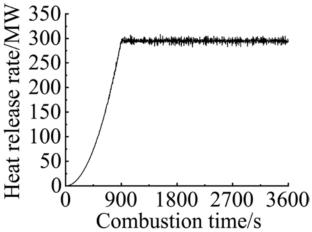Study on Fire Plume and Surface Temperature Field of Components in Mid Through Steel Box Ribbed Arch Bridge Under Tanker Fire
Abstract
A three-span mid through steel box ribbed arch bridge under tanker fire was taken as the research object. The appropriate fire area, location, heat release rate and growth curve were selected according to the bridge situation and most unfavorable conditions, and the numerical analysis model was established and executed based on FDS to reveal the fire plume temperature field and surface temperature field of components. The results show that the maximum temperature at 0 m to 1 m will increase by about 8.49% in downwind transverse, and then gradually decrease by about 4.7% at 5 m when the wind speed is greater than 2 m/s. The increase of wind speed will cause the temperature near the fire source to rise, and gradually decrease with increasing distance from the fire source. The maximum surface temperature of arch rib changes from 648°C in the height of 3 m to 1188°C in the height of 2 m when the wind speed increased from 0 m/s to 8 m/s, and the maximum surface temperature of the sling changes from 225°C at 4 m height near the centerline sling to 760°C at 0 m height of the centerline sling. The increase in wind speed causes the flame to tilt and elongate, and the impact on the components near the fire source becomes greater. The maximum surface temperature at the bridge deck center and fire plume temperature of 0.5 m above the bridge deck with a wind speed of 8 m/s decreased by about 50% compared with no wind. Appropriate wind speed can effectively reduce the damage of fire to bridge structure. The research results can provide a preliminary judgment basis for the fire resistance design of steel box ribbed arch bridges in complex fire environment, and further guide the safe operation and maintenance of similar bridges.


 求助内容:
求助内容: 应助结果提醒方式:
应助结果提醒方式:


